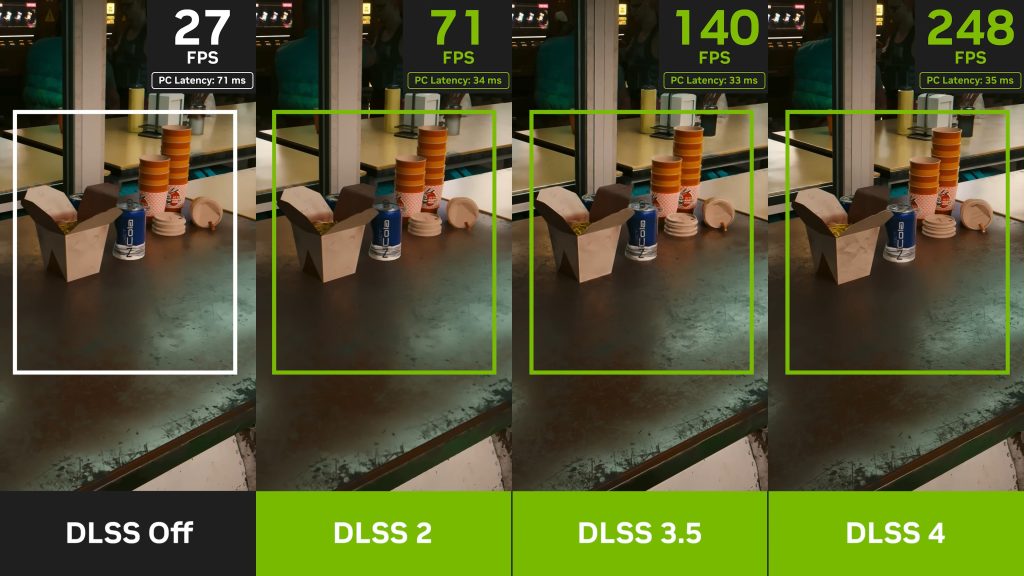Nvidia has made significant strides in optimizing the memory usage of its DLSS (Deep Learning Super Sampling) technology, recently announced with the DLSS 4 update. The latest DLSS SDK, version 310.3.0, not only brings the Transformer model out of beta but also effectively reduces VRAM (Video Random Access Memory) usage by 20%. This improvement is particularly noteworthy given the increasing demands of modern gaming and the graphical fidelity that players expect.
Understanding DLSS and Its Evolution
DLSS is a proprietary technology developed by Nvidia that harnesses deep learning and AI to enhance frame rates while maintaining high visual fidelity. The Transformer model, which has been the focus of Nvidia’s recent optimizations, replaces the older CNN (Convolutional Neural Network) model. This newer model is designed to produce images that are closer to native resolutions while requiring less computational overhead. Initially, the Transformer model had a high memory footprint, consuming nearly twice as much VRAM as its predecessor, but recent enhancements have narrowed this gap. The new Transformer model now requires only 40% more VRAM compared to the CNN model.
According to a recent article on VideoCardz, the reduction in VRAM usage has moved the memory impact of the new model closer to the older CNN architecture, which is a positive development for gamers looking to optimize performance without upgrading their hardware.
Performance Benchmarks and Real-World Implications
The numerical differences in VRAM consumption between the various models are striking. At 1080p resolution, the new Transformer model consumes approximately 85.77MB of VRAM, compared to the old model’s 106.9MB and the CNN model’s 60.83MB. As the resolution increases, so does the memory requirement. At 4K, the new Transformer model’s VRAM footprint jumps to 307.37MB. In comparison, the CNN model uses about 199.65MB under the same conditions. This is illustrated in the following table:
- 1080p: New Transformer Model (85.77MB), Old Transformer Model (106.9MB), CNN Model (60.83MB)
- 1440p: New Transformer Model (143.54MB), Old Transformer Model (181.11MB), CNN Model (97.79MB)
- 4K: New Transformer Model (307.37MB), Old Transformer Model (387.21MB), CNN Model (199.65MB)
- 8K: New Transformer Model (1,225.17MB), Old Transformer Model (1,517.60MB), CNN Model (778.3MB)
While a 20% reduction in VRAM might seem modest at lower resolutions, it could have significant implications at higher resolutions, particularly for players running graphics-intensive titles at 8K. Even with these reductions, memory consumption can eclipse a gigabyte, underscoring the necessity for powerful GPUs.
Substantial VRAM Optimizations in Frame Generation
Nvidia has also made strides in frame generation, a feature that often requires more VRAM compared to upscaling. Notably, DLSS 4 has introduced improvements that reduce VRAM use by 30% in this area. For instance, it has been reported that using DLSS 4 in games like Warhammer 40,000: Darktide results in 400MB less VRAM consumption at 4K compared to DLSS 3’s frame generation capabilities, as outlined in an Nvidia blog post.
This distinction is crucial as it highlights Nvidia’s commitment to optimizing both upscaling and frame generation under the DLSS umbrella. The balance between performance and graphical fidelity remains a central focus for the company, especially with the increasing competition in the GPU market.
Future Expectations and Community Response
The community has responded positively to the updates, recognizing the potential benefits of reduced VRAM usage. Many gamers and developers are eager to see how these optimizations will affect future titles and overall gaming experiences. Historically, improvements in Nvidia’s DLSS technology have led to broader adoption due to enhanced performance at lower hardware requirements.
As Nvidia continues to refine its technology, expectations are high that future iterations of DLSS will bring even more significant optimizations, potentially leading to further reductions in VRAM usage and enhanced performance. As gamers continue to push the limits of resolution and frame rates, these advances will be crucial in ensuring accessibility and performance balance across a wide array of gaming setups.
For those looking to stay updated on Nvidia’s developments, following technological news sources such as Tom’s Hardware can provide timely information on upcoming features, optimizations, and releases.

